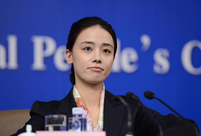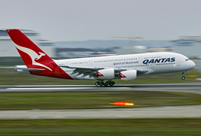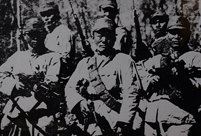 Ballerinas anywhere but onstage
Ballerinas anywhere but onstage
 Top 10 safest airlines in the world
Top 10 safest airlines in the world
 Top 10 most popular instant messaging apps in the world
Top 10 most popular instant messaging apps in the world
 Inspiring shadow images of Chinese army
Inspiring shadow images of Chinese army
 Models shine Xinjiang auto show
Models shine Xinjiang auto show
 From laid-off worker to int'l referee in bodybuilding
From laid-off worker to int'l referee in bodybuilding
 Selected photos of 'two sessions'
Selected photos of 'two sessions'
 Most unusual taxis around the world
Most unusual taxis around the world
 Bridge Worship Festival in Taijiang, SW China
Bridge Worship Festival in Taijiang, SW China
THE HAGUE, March 26 -- The basis for a cross-border approach to fight nuclear terrorism lies in the field of nuclear forensics, Ed van Zalen from the Netherlands Forensic Institute (NFI) told Xinhua Tuesday.
From an investigation of a burnt-out mobile phone to how dirty bombs are made and who are responsible for such weapons, the NFI could know the answer. Ed van Zalen, program manager for chemical, biological, radiological and nuclear defense at the NFI, has been working for years in bringing nuclear science and forensic science together by promoting the sharing of knowledge.
The use of forensic investigation techniques in a nuclear or radiological incident was to some extent already on the Nuclear Security Summit (NSS) agenda since 2010, after an initiative taken by the Dutch delegation.
"As a forensic institute we are not focused on states but more on terrorists and criminals," Van Zalen said to Xinhua. "That means that law enforcement must be involved. That was also the starting point for us to create forensics in nuclear security, which means that you need to use all available techniques, DNA, fingerprints, nuclear forensics, digital forensics and more. We need to have one big tool to investigate a nuclear security incident."
"When a nuclear incident happened nuclear forensics focuses on characterizing the material and find the possible source," Van Zalen added. "The traditional forensics focuses on which person, is related to the incident and how did it happen. We need to combine them, sometimes also need intelligence to get the whole story."
Nuclear forensics was adopted in a work plan at the first NSS of 2010 in Washington and in November that year the Netherlands was asked to create a White Paper on the subject during a meeting of the chief negotiators in Buenos Aires, Argentina. This White Paper, a statement to explain the current situation and what needs to be done, was presented and approved two years ago at the Seoul Summit.
In the White Paper, the NFI proposed to create a nuclear forensics lexicon, with a set of definitions used in both fields. According to the NFI, this was necessary because a lot of definitions had a different meaning in the two fields.
In addition, the NFI proposed to make an international border-crossing survey of the best practices and available capabilities on nuclear forensics.
The third proposal the NFI made in the White Paper was to bring all people involved together to create an education and training program.
Now two years have passed, Van Zalen is satisfied with the deliverables. "The lexicon is available in a free app since this summit," he commented. "We also produced a survey booklet with all methods and in addition nuclear forensics is part of the master program at the Technical University in Delft and part of the incident program at the International Atomic Energy Agency. We also created a knowledge program to connect experts from different countries."
"But our work is never finished," Van Zalen added. "For us it should be good if our work will be implemented in other countries as well. The next step is to assist countries in developing new methods, not only investigation methods for traditional crime scenes, but to make the methods also appropriate for nuclear security."
 Female journalists at 'two sessions'
Female journalists at 'two sessions' Interpreters serving 'two sessions'
Interpreters serving 'two sessions' Female SWAT team in Chongqing
Female SWAT team in Chongqing Top 10 safest airlines in the world
Top 10 safest airlines in the world Old photos of Anti-Japanese War
Old photos of Anti-Japanese War Mysterious 'Dolan Tribe' in Xinjiang
Mysterious 'Dolan Tribe' in Xinjiang A bite of Luoping County
A bite of Luoping County This is Shanghai
This is Shanghai Chinese airborne troops complete parachute training in various training bases
Chinese airborne troops complete parachute training in various training bases Ballerinas anywhere but onstage
Ballerinas anywhere but onstage Most unusual taxis around the world
Most unusual taxis around the world Micro-expression at 'two sessions'
Micro-expression at 'two sessions' Bridge Worship Festival in Taijiang, SW China
Bridge Worship Festival in Taijiang, SW China Hollywood documentary brings Diaoyu Islands truth to new audience
Hollywood documentary brings Diaoyu Islands truth to new audience Miss HK and actresses shine at flower show
Miss HK and actresses shine at flower showDay|Week|Month